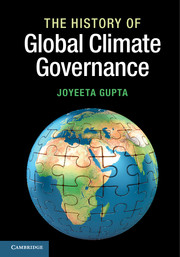Book contents
- Frontmatter
- Dedication
- Contents
- Foreword
- Preface and acknowledgements
- List of abbreviations
- Part 1 Introduction
- 1 Grasping the essentials of the climate change problem
- 2 Mitigation, adaptation and geo-engineering
- Part 2 The history of the negotiations
- Part 3 Issues in global climate governance
- Part 4 Towards the future
- References
- Index
1 - Grasping the essentials of the climate change problem
from Part 1 - Introduction
Published online by Cambridge University Press: 05 February 2014
- Frontmatter
- Dedication
- Contents
- Foreword
- Preface and acknowledgements
- List of abbreviations
- Part 1 Introduction
- 1 Grasping the essentials of the climate change problem
- 2 Mitigation, adaptation and geo-engineering
- Part 2 The history of the negotiations
- Part 3 Issues in global climate governance
- Part 4 Towards the future
- References
- Index
Summary
Climate change intertwined with life
Ecosystems are interconnected (Commoner, 1971). Hydrological and bio-physical spheres flow into each other. Production and consumption patterns are interlinked across continents. ‘National spaces, previously fragmented, are being integrated on a global scale’ (UNIDO, 2008: 5). The ecological, social and economic crises are interlocking crises (WCED, 1987: 4) with intergenerational scope in an increasingly globalizing world!
Contrast that with our governance patterns. Local governance cannot cope with global externalities. National governance is affected by competing ideologies, interests and fragmented systems. Democratic politics is locked into 4–5-year recurring elections; while political decisions on institutions, technologies and infrastructure lead to long-term, locked-in, processes (Barbier, 2011: 238). Current investments are locking the world into an insecure, inefficient and high-carbon energy system (IEA, 2011). Lock-in refers to the difficulties in reversing decisions because of the high costs involved, and because these have a high inertia. Transboundary governance is affected by the competition between short-term national versus regional interests. Global governance is fractured along national interests, and is fragmented, pluralist, incoherent and often counter-productive. ‘Glocal’ (global to local) governance is affected by past politics. Path dependency affects the future.
- Type
- Chapter
- Information
- The History of Global Climate Governance , pp. 3 - 21Publisher: Cambridge University PressPrint publication year: 2014



